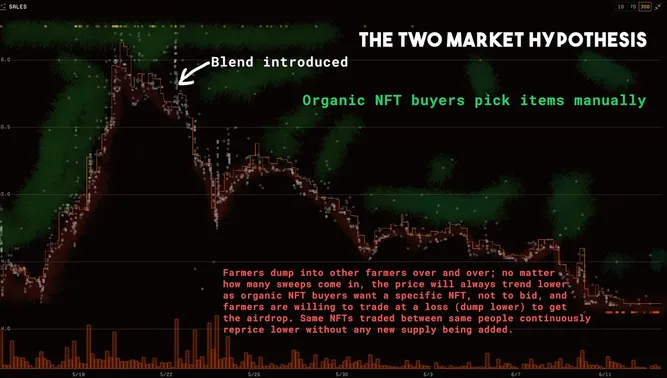
There’s been some buzz over a new article on how Blur could be the key cause for NFT prices to bleed over the last few months. (https://1mihai.medium.com/is-blur-nuking-your-nft-prices-yes-and-heres-how-923ad7b9dae4)
The author argues that Blur’s incentive system creates a dichotomy between “mercenary” and “genuine” market participants, leading to destabilized NFT prices and a cyclic dumping problem.
These “mercenary” participants are Blur farmers: primarily motivated by short-term profits, continuously bid on NFTs and then dump them back into the market to maximize their Blur points.
He posits that the current Blur incentive mechanism allows and encourages the constant repricing of assets despite no new supply hitting the market, and even if demand outpaces supply.
Here’s what I think:
The author makes several astute observations on the behaviours of airdrop farmers, and his article is worth a read to understand the effects of Blur incentives at a deeper level.
BUT, at the end of the day, NFT prices are bleeding out not because of Blur, but simple supply and demand economics. Prices are down because there is just not enough real organic demand for NFTs at the prices today. Many participants and traders have left, and its not offset by the few potential buyers that are entering.
Blur’s mechanisms, including farmer behviours, only accelerate the process of finding the actual market equilibrium.
It’s been a difficult week for NFTs. Many people lost money. Directing hate towards Blur is a natural way of coping. Putting all the blame on Blur for the price drop is underserved, in my opinion.